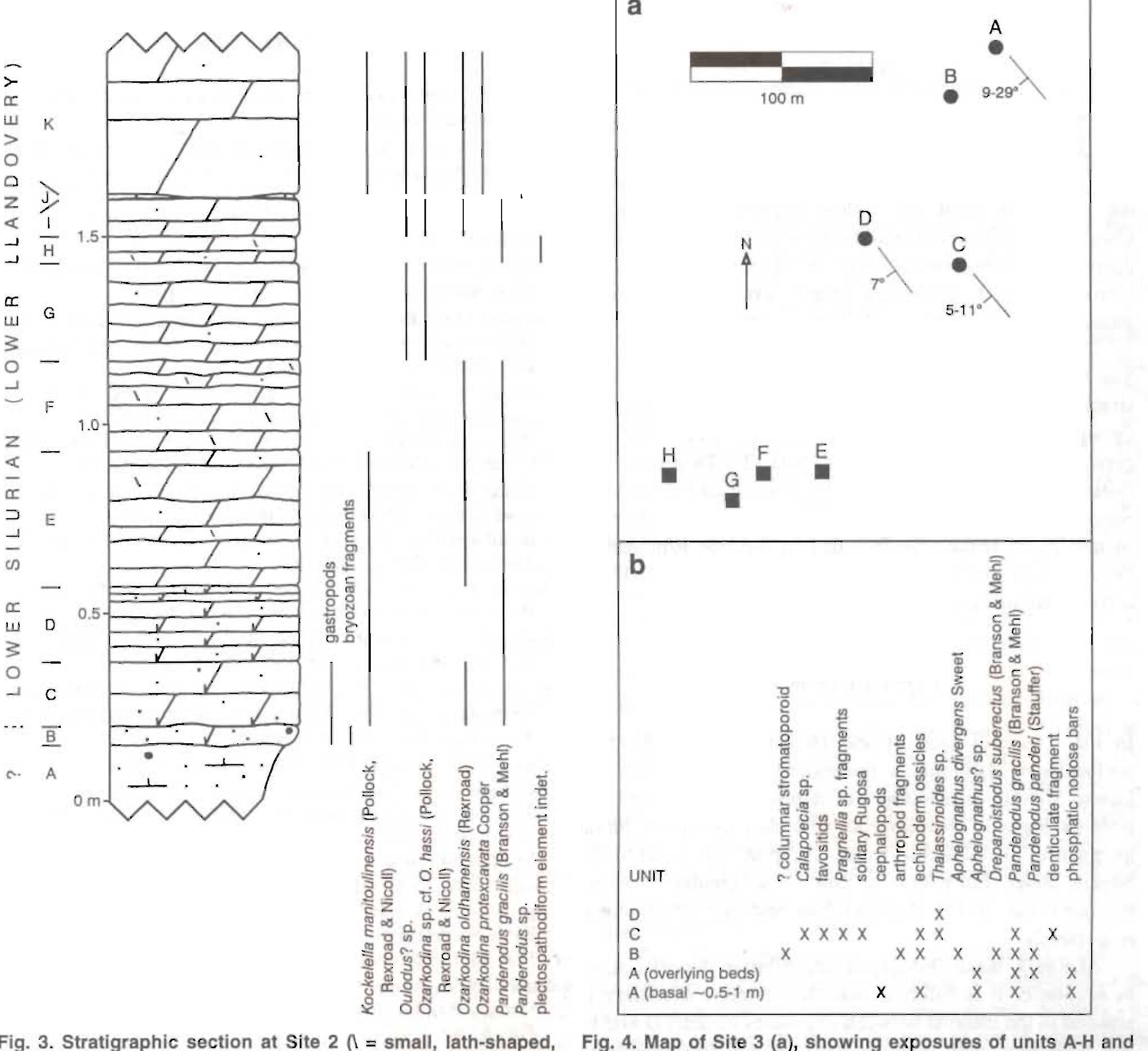This Atlas of Silurian and Middle-Late Ordovician Paleogeographic Maps shows the changing paleogeography from the Middle Ordovician (Darwillian, 464.5 Ma) to the Late Silurian (Ludlow & Prodoli, 419.5 Ma). The maps are from volume 5 of... more
The illaenid trilobite Vysocania is widely represented in the Upper Ordovician of the Czech Republic, Portugal and Spain, and is one of the most characteristic taxa in the high-latitude peri-Gondwana palaeobiogeographical region to which... more
This diagram show the rise and fall of global temperatures during the last 540 million years. Scotese (2016) describes how this curve was made. It replaces the curve published in Scotese et al., (1999). PETM= Paleocene-Eocene Thermal... more
RESUMEN Se presentan los resultados de un análisis detallado de facies de la sucesión de diamictitas de la Formación Cancañiri en el área de Sella – Negro Muerto al norte de Tarija. La sección estudiada cubre sedimentos del Ordovícico... more
The " Taconic Unconformity " is a regional polyphase event that occurred during the Late Ordovician in North Africa. This major unconformity event coincided with regional glaciation episodes that controlled the current configuration of... more
The Upper Ordovician glacial record of southern Jordan (Ammar Fm.) essentially consists of palaeovalley infills and of a subordinate time-transgressive fluvial to shallow-marine succession overstepping both the palaeovalleys and... more
The Late Ordovician was a critical interval in geologic history, during which both the biosphere and marine environments underwent severe perturbations, including one of the 'Big Five' Phanerozoic mass extinctions and the massive but... more
A Late Ordovician ice sheet in South America: Evidence from the Cancañiri tillites, southern Bolivia
Detailed mapping and facies analysis of a thick succession of diamictites of the Upper Ordovician Cancañiri Formation in southern Bolivia has revealed a glacioterrestrial origin for these sediments. The Cancañiri diamictites were... more
Mass extinctions have altered the trajectory of evolution a number of times over the Phanerozoic. During these periods of biotic upheaval a different selective regime appears to operate, although it is still unclear whether consistent... more
In the Valongo Anticline, northern Portugal, the Upper Ordovician-age Sobrido Formation records glacioeustatic sea-level changes and glacially-influenced depositional environments on the north Gondwana platform associated with the... more
Abstract The Late Ordovician was a critical interval in geologic history, during which both the biosphere and marine environments underwent severe perturbations, including one of the ‘Big Five’ Phanerozoic mass extinctions and the massive... more
Although sphinctozoans, multi-chambered hypercalcified sponges, can be traced from the Cambrian, their reef-building capacity in the Early Paleozoic appears limited. The oldest sphinctozoan-coral-microbial reef is documented here, from... more
In the Murzuq Basin, the Late Ordovician glaciogenic succession forms a very complex clastic reservoir system. Although the structural setting is simple, the architecture of the stratigraphic succession is particularly intricate, and... more
The Upper Ordovician glacial record of southern Jordan (Ammar Fm.) essentially consists of palaeovalley infills and of a subordinate time-transgressive fluvial to shallow-marine succession overstepping both the palaeovalleys and... more
Study of new conodont collections from the Vaux Limestone exposed at its classical locality at Saint-Hilaire-la-Gérard in the Sées syncline, the conodont fauna of which was previously described in a preliminary way by Weyant et al. (1977,... more













